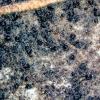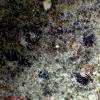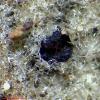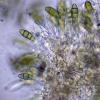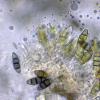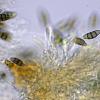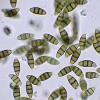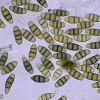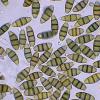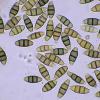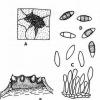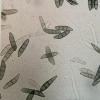
15-12-2025 07:09
 Danny Newman
Danny Newman
indet. Rutstroemiaceae sp. on unk. fallen leavesMc

15-12-2025 21:11
 Hardware Tony
Hardware Tony
Small clavate hairs, negative croziers and IKI bb

15-12-2025 15:54
 Johan Boonefaes
Johan Boonefaes
Unknown anamorph found on the ground in coastal sa

15-12-2025 15:48
 Danny Newman
Danny Newman
Melanospora cf. lagenaria on old, rotting, fallen

15-12-2025 07:05
 Danny Newman
Danny Newman
Pseudosclerococcum golindoi (det: Zotto)near Cosb

15-12-2025 11:49
 Danny Newman
Danny Newman
ITS sequences from the following two collections B

15-12-2025 12:34
 Danny Newman
Danny Newman
indet. Rhytismataceae on oak leafnear Purchase Roa

09-12-2025 12:06
 Andgelo Mombert
Andgelo Mombert
Bonjour,Je recherche l'article concernant Hypobryo
Anamorph on a leaf.
Josep Torres,
16-04-2025 08:53
An anamorph photographed under holm oaks this past Sunday. Apart from the holm oaks, there were only Buxus and Juniperus in the area. So, despite the leaf being distinct from the surrounding ones, I must assume it was an oak leaf. Although I can't confirm this either, the saprophytic ascomycete only affected this leaf, and no matter how hard I looked, I couldn't find any other affected leaves.
Blackish ascomata, like deformed grains between 0.25 and 0.30 mm, sprouting scattered over the upper surface of the leaf.
Conidiogenous hyphae arranged in parallel, between 10 and 30 microns long, produced fusiform, glusky-walled conidia with three distinct septa, slightly constricted, the two central cells more pigmented, and the ends slightly mucronate and hyaline, no apparent reaction to Melzer's Reagent.
These conidia measured in water:
(20.1) 20.6 - 24.5 (24.8) × (7.1) 7.6 - 8.5 (8.9) µm
Q = (2.4) 2.6 - 3 (3.3) ; N = 40
Me = 22.7 × 8.1 µm ; Qe = 2.8
On this occasion, I admit I'm completely lost.
Any feedback from you would be greatly appreciated.
Thank you in advance.
Best regards.
Luc Bailly,
16-04-2025 12:22
Josep Torres,
16-04-2025 14:29
Re : Anamorph on a leaf.
Thanks, Luc.
Hendersonula seems like a good option. I was completely unaware of the existence of the genus, given the limited information available online. Furthermore, from what I've seen, it's subject to constant change. In the absence of new opinions, I'm leaving this work in my archives for now as Hendersonula cf.
Best regards.
Hendersonula seems like a good option. I was completely unaware of the existence of the genus, given the limited information available online. Furthermore, from what I've seen, it's subject to constant change. In the absence of new opinions, I'm leaving this work in my archives for now as Hendersonula cf.
Best regards.
Luc Bailly,
16-04-2025 16:44
Re : Anamorph on a leaf.
Hendersonula mostly grow on bark, so maybe something close.
Josep Torres,
17-04-2025 08:27
Re : Anamorph on a leaf.
Thanks, Luc.
Then it's best to leave the topic as the closest thing for now, that is, Hendernosula aff.
Best regards.
Then it's best to leave the topic as the closest thing for now, that is, Hendernosula aff.
Best regards.
Josep Torres,
19-04-2025 07:53
Re : Anamorph on a leaf.
Thanks, John, for your opinion.
Considering the substrate, Fusariella seems like a good option, but in this case, what no longer fits me is the conidiogenesis, nor the conidia size. In most species, they are shorter and narrower. Based on the conidia size, it might fit Fusariella kansensis, but not its morphology, since it is described as having curved conidia.
Best regards.
Considering the substrate, Fusariella seems like a good option, but in this case, what no longer fits me is the conidiogenesis, nor the conidia size. In most species, they are shorter and narrower. Based on the conidia size, it might fit Fusariella kansensis, but not its morphology, since it is described as having curved conidia.
Best regards.

